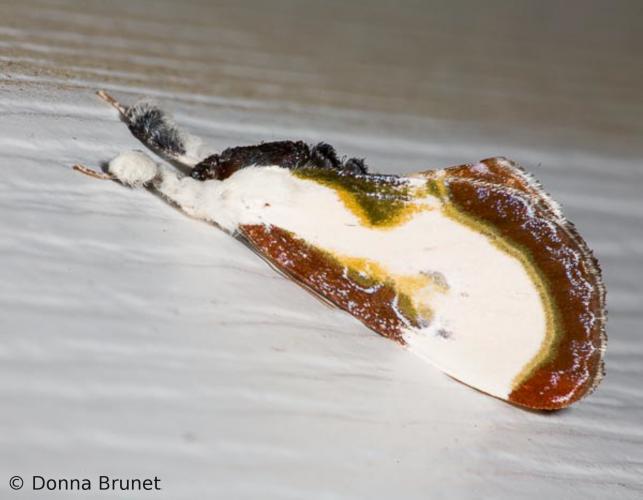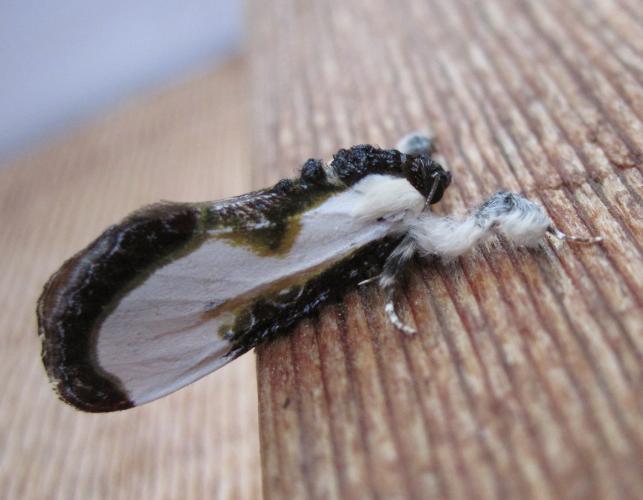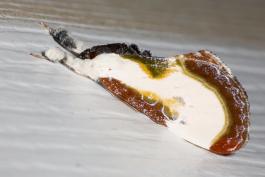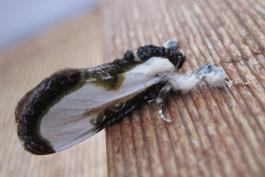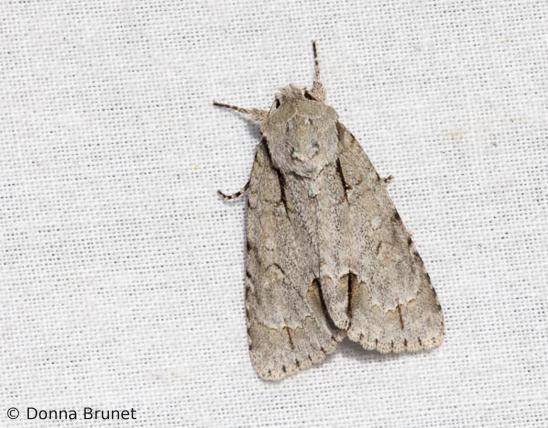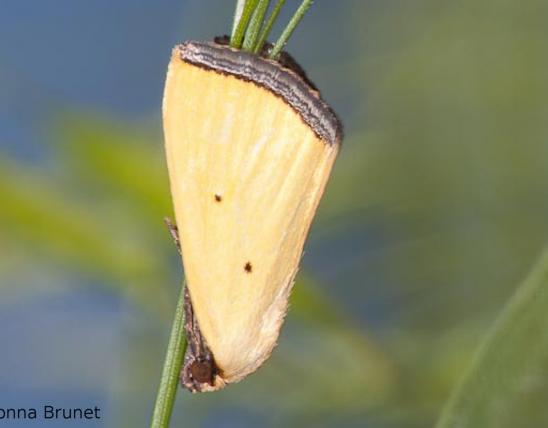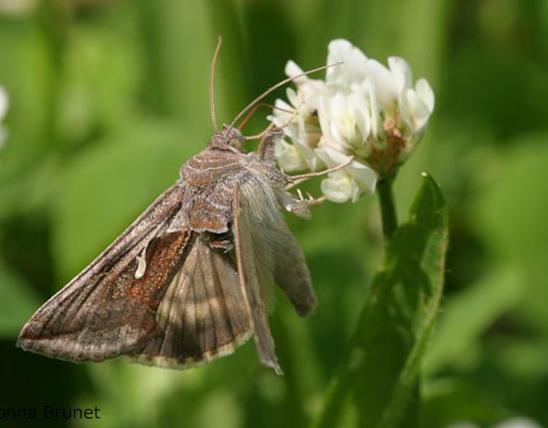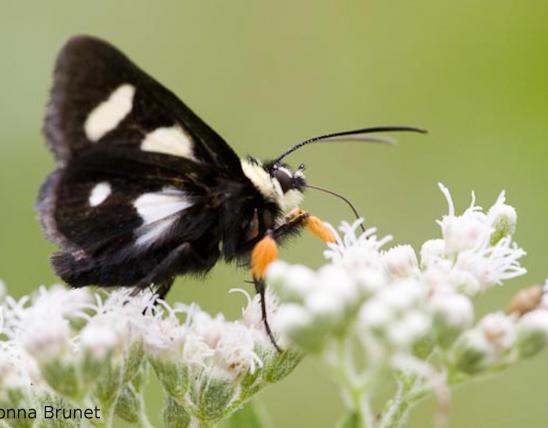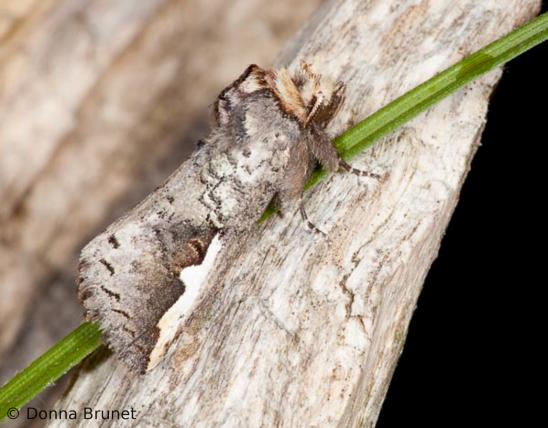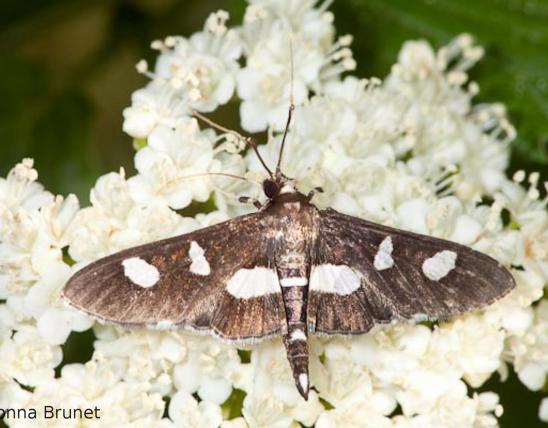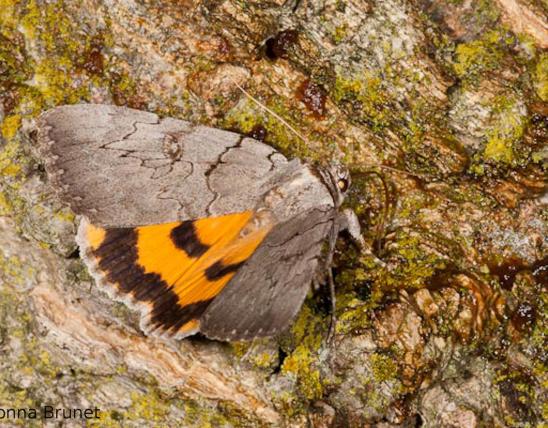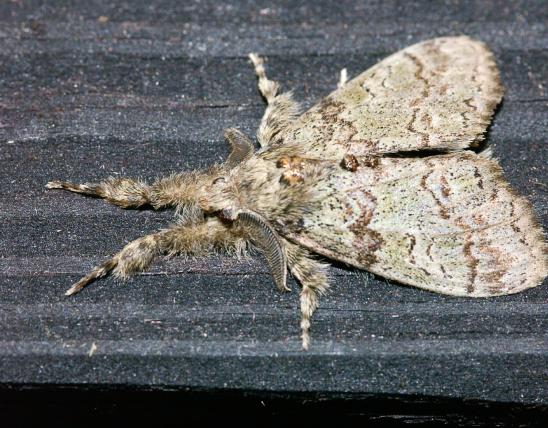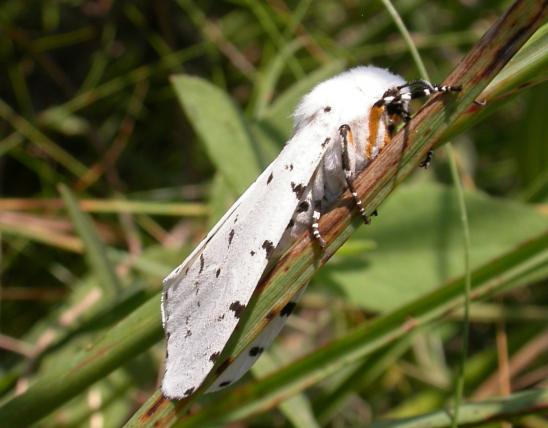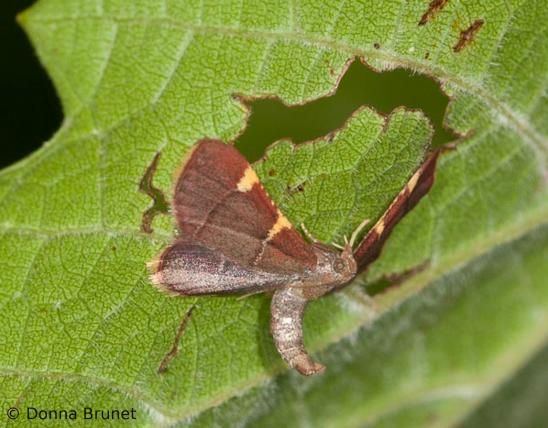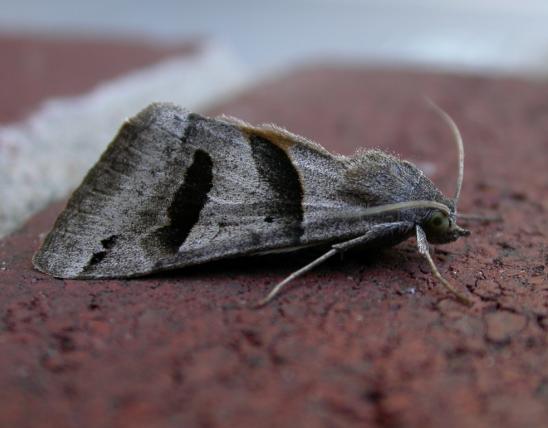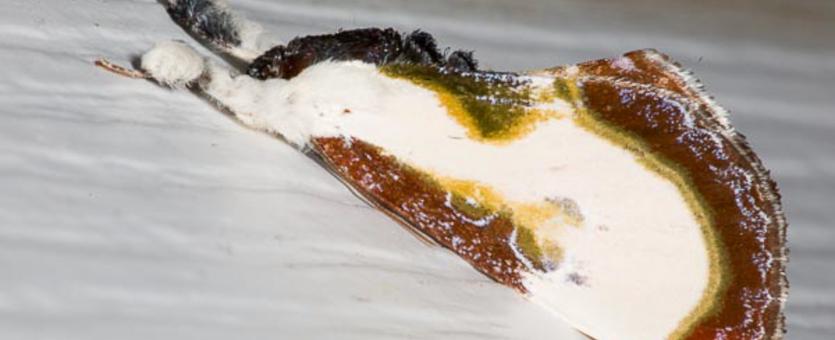
Adults: The beautiful wood-nymph rests with its white and brown forewings folded like a roof over its yellow hindwings. At rest, it resembles a bird dropping. The first pair of legs, often held outstretched, have fluffy white hairs. Forewings are white with a bold reddish-brown margin and a yellowish band in between. The curving brown marks are smooth (not scalloped). The yellow-orange hindwings have a brown border along the bottom edge that does not extend to the farthest outer tip of the wing.
Larvae: Each segment has a broad orangish band with black dots; between the orange bands are white bands marked with a few thin bands of black that extend below the spiracles. The head is orange; the body is humped at rear.
Similar species: The pearly wood-nymph (E. unio) is similar, though smaller. The brown outer margin of its forewings is scalloped against the white, as opposed to having a smooth-curving border.
Wingspan: 1¼–1¾ inches
Statewide.
Habitat and Conservation
As with other moths, adult beautiful wood-nymphs may fly through any number of habitats, so they may occur nearly anywhere. But if you are looking to see one, start in places where their food plants are abundant. Females must deposit eggs on the correct larval food plants, and males hope to encounter females in places they are most numerous. Also, adults fresh from emerging from their pupae may be most abundant near where they lived as caterpillars. So, in this case, bottomland forests and thick lowland woods are a good bet, since those are places where wild grapes, Virginia creeper, and other members of the grape family are abundant.
During the day, this moth rests in an exposed position, mimicking a bird dropping.
Food
Caterpillars eat the foliage of grapes (Vitus spp.), Virginia creeper (Parthenocissus quinquefolia), peppervine (Ampelopsis arborea), and raccoon grape (A. cordata). These are all in the grape family. They also apparently feed on buttonbush (Cephalanthus occidentalis). The adults may not feed at all.
Status
Resident species.
Life Cycle
Beautiful wood-nymphs fly and mate between May and September, with peak activity in June, July, and August. In southern parts of the United States, there may be two broods, but in the north where summers are shorter, only one brood. In fall, when ready to pupate, the mature larva bores into soft, pithy corncobs, bark, or decaying wood and constructs an insubstantial cocoon incorporating pieces of pith or bark. In spring or early summer, the adult moth emerges.
Human Connections
This is one of several moth species whose larvae can chew leaves in grape orchards, making them unpopular to viticulturalists (grape growers). Meanwhile, this species also feeds on many types of wild grapes and Virginia creeper, which have little agricultural importance, except perhaps as weeds.<
Ecosystem Connections
This moth is a member of the Noctuidae, or owlet moth family, so it is related to dagger moths, underwings, cutworms and armyworms. It is a very large group, with more than 2,500 species in North America north of Mexico. Many noctuids have drab, camouflage forewings that, when the moth is at rest, conceal bright-colored hindwings. This species takes camouflage a step farther by mimicking bird droppings. This is evidence that noctuids must be a favorite food for animals that hunt by sight.
All noctuid moths also possess a pair of auditory organs called tympana. These are located on the thorax and enable the moth to hear the high-frequency chirping of bats — one of their primary predators. When a moth detects the chirping of bats, it immediately engages in erratic, evasive flight.
